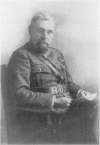Abstract
OBJECTIVE: The care of traumatic wounds has evolved over hundreds of years, largely as a result of armed conflicts. The lessons learned during World War I in the treatment of extensive soft-tissue injuries proved invaluable in reducing infection and preventing loss of limb and life. Foremost among these was the use of debridement. This report reviews the development of debridement as standard treatment of war wounds and highlights the surgeon largely responsible for its resurgence during one of this century's saddest chapters. SUMMARY BACKGROUND DATA: Before World War I, the care of wounds consisted of minimal exploration and liberal use of then-new antiseptics. For limited injuries, this approach appeared adequate. World War I saw the introduction of devastating weapons that produced injuries that caused extensive devitalization of tissue. Standard treatment of these patients proved woefully inadequate to prevent life-threatening infections. METHODS: This is a historical review of the conditions that occurred during World War I that prompted a change in wound management. One of those responsible for this change was the Belgian surgeon Antoine Depage. His life and contributions to the care of war wounds are profiled. Depage reintroduced the discarded French practice of wound incision and exploration (debridement) and combined it with excision of devitalized tissue. RESULTS: Through the use of debridement, excision, and delayed wound closure based on bacteriologic survey, Depage was able to reduce the incidence of infectious complications of soft-tissue injuries, particularly those involving fractures. CONCLUSIONS: Through his experiences in the Great War, Antoine Depage was able to formulate a treatment plan for wounds of war. All such injuries were assumed to be contaminated and, as such, they required early and careful debridement. Depage thought that wound closure should often be delayed and based his decision to close on the bacteriologic status of the wound. To him, we owe our current management of traumatic wounds.
Full text
PDF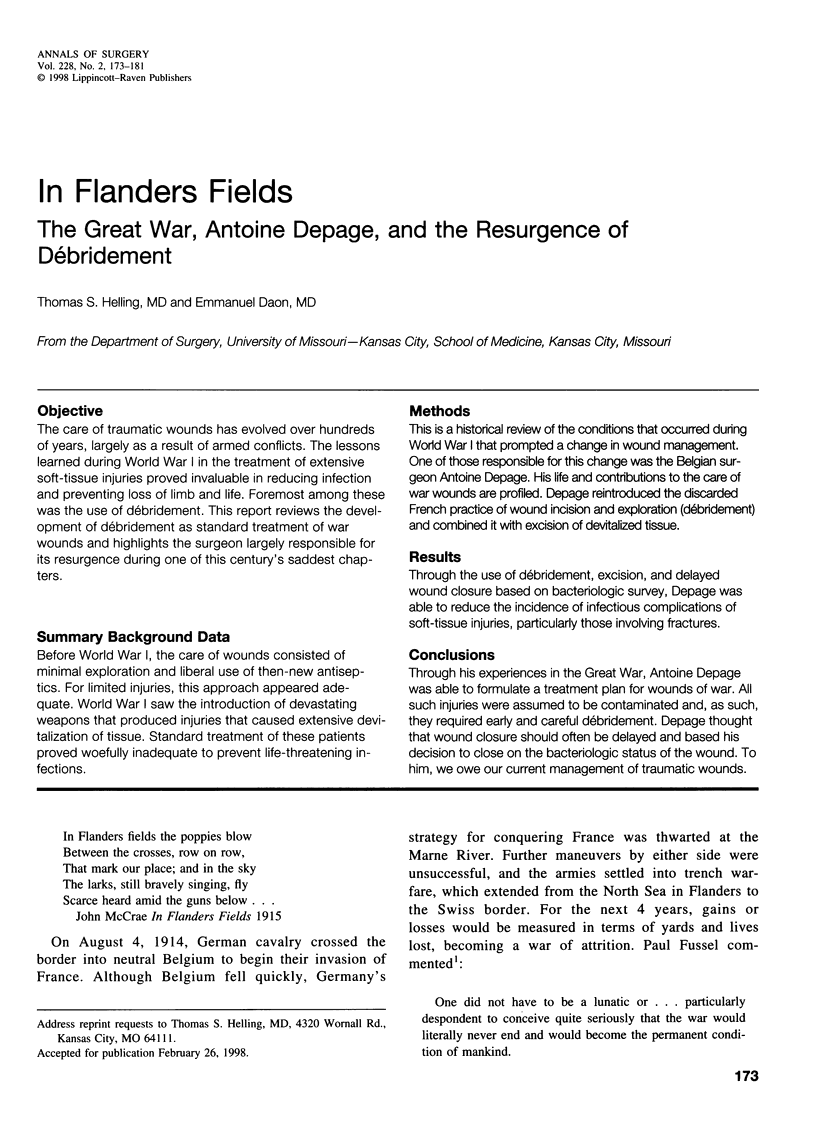
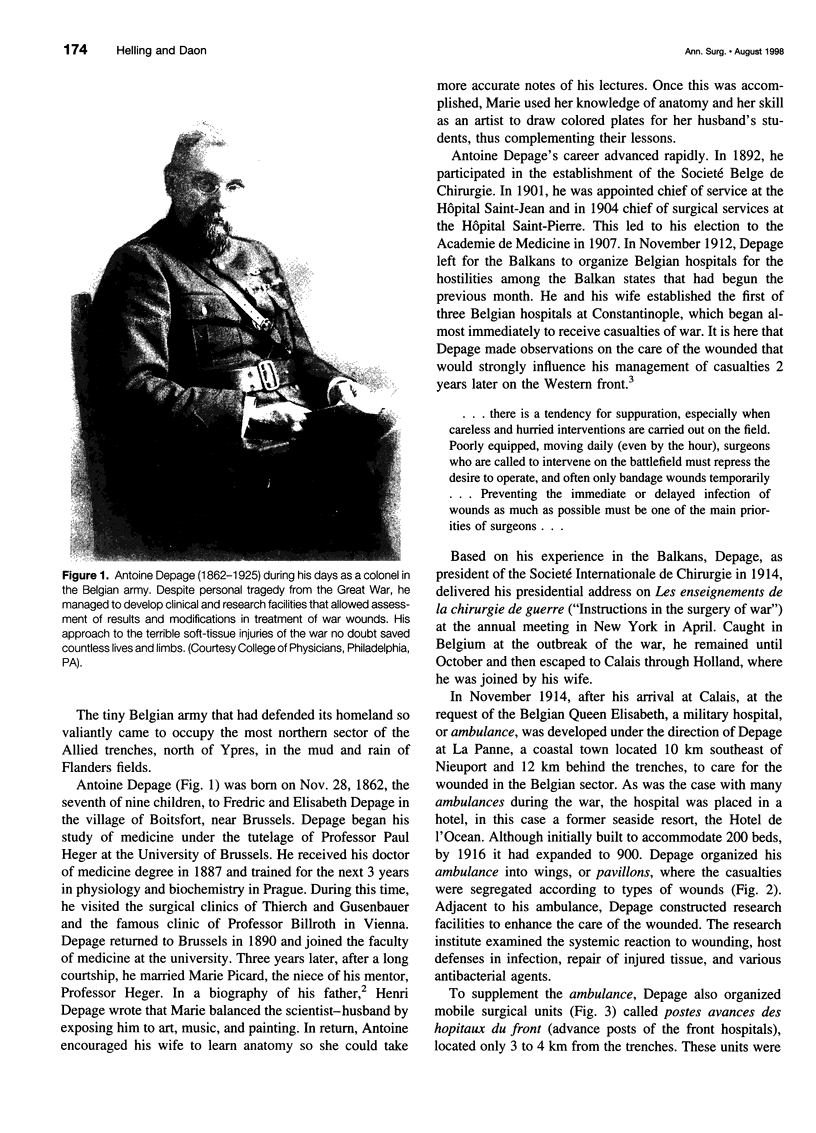
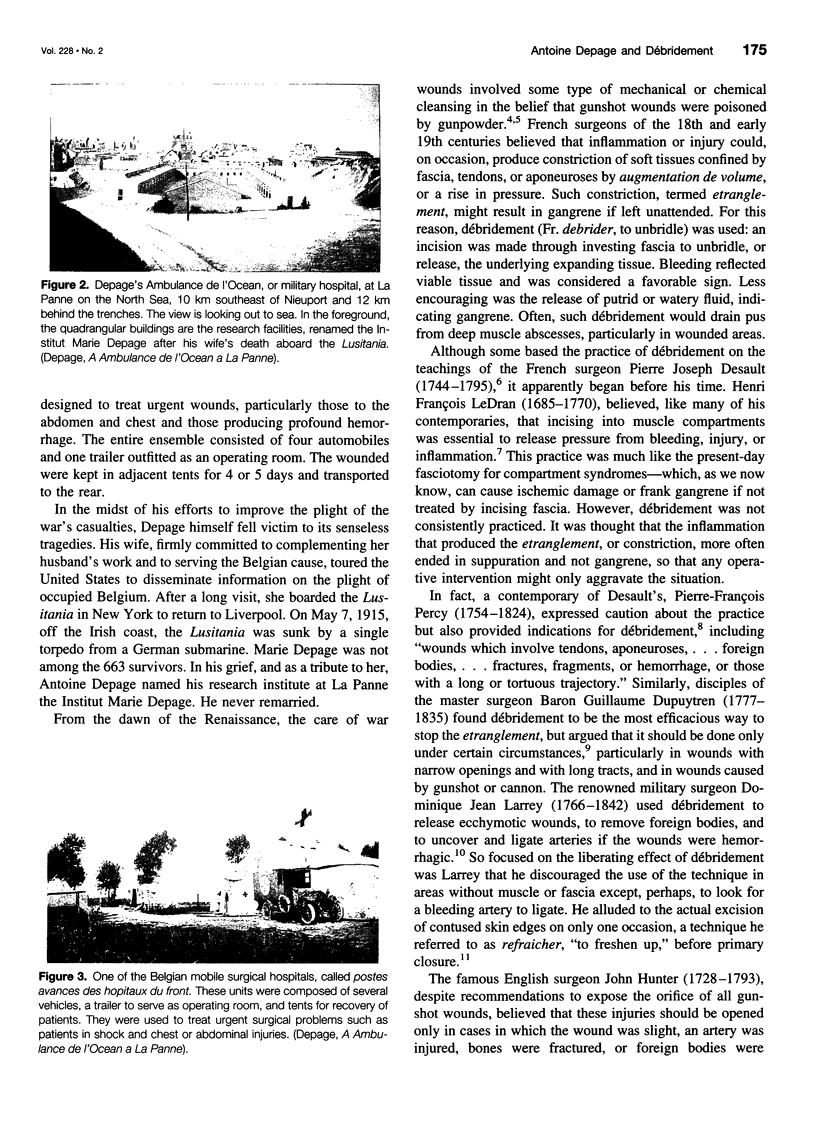
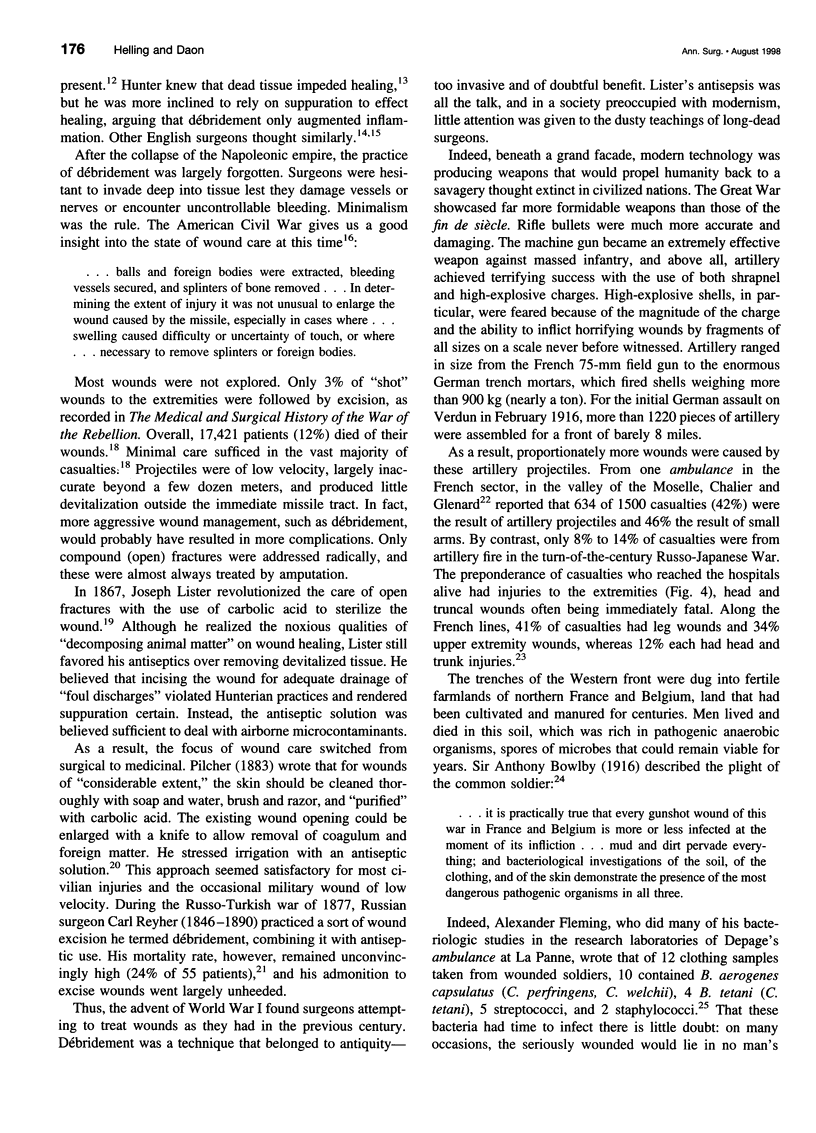
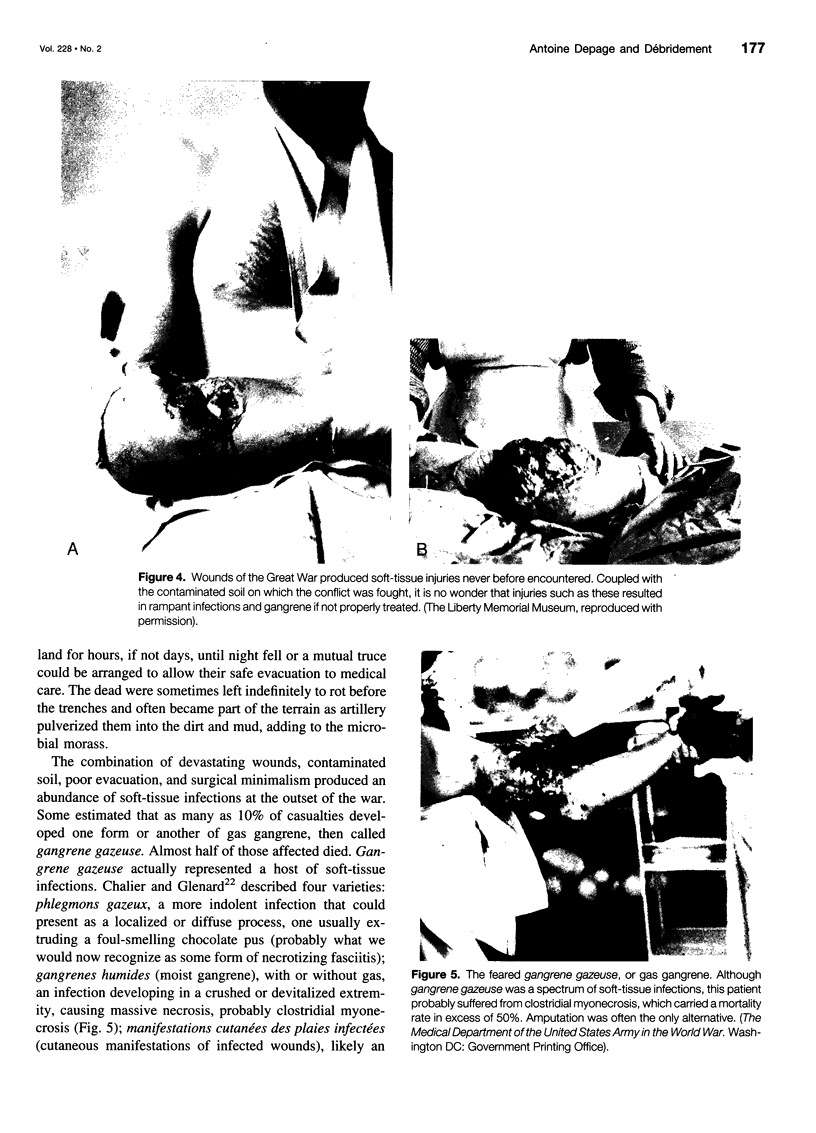
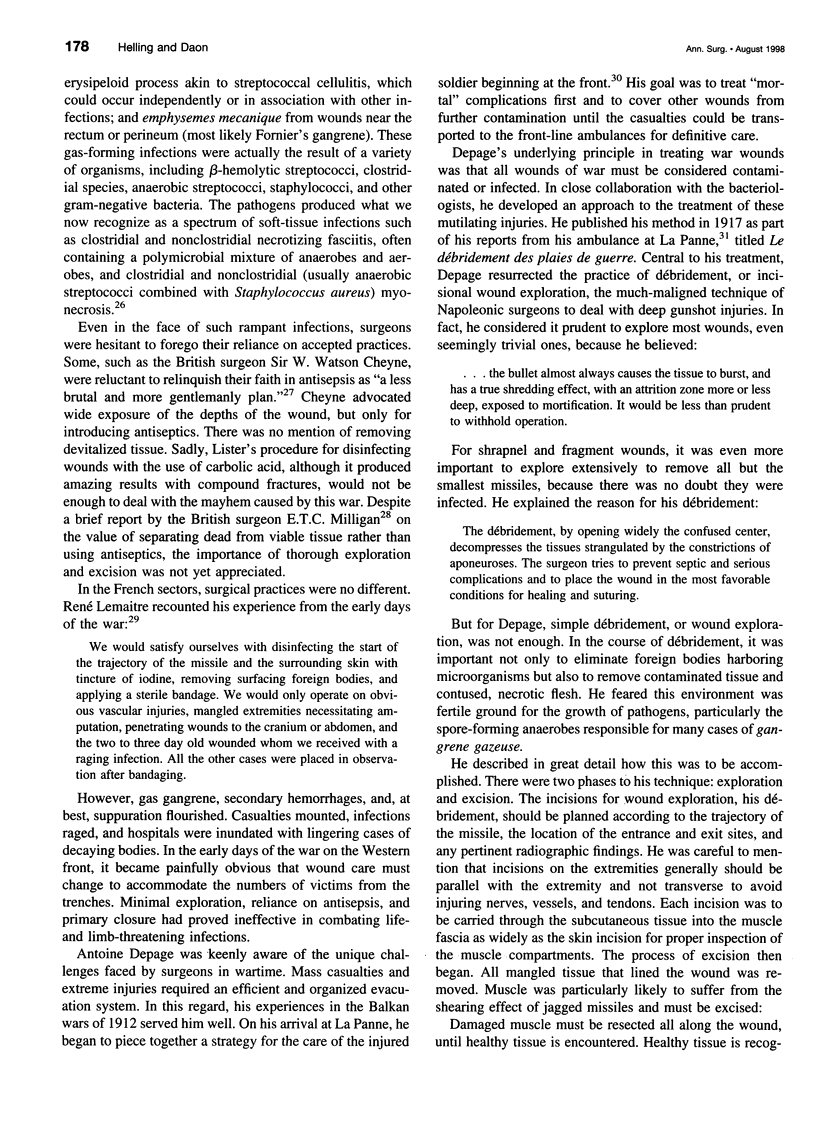
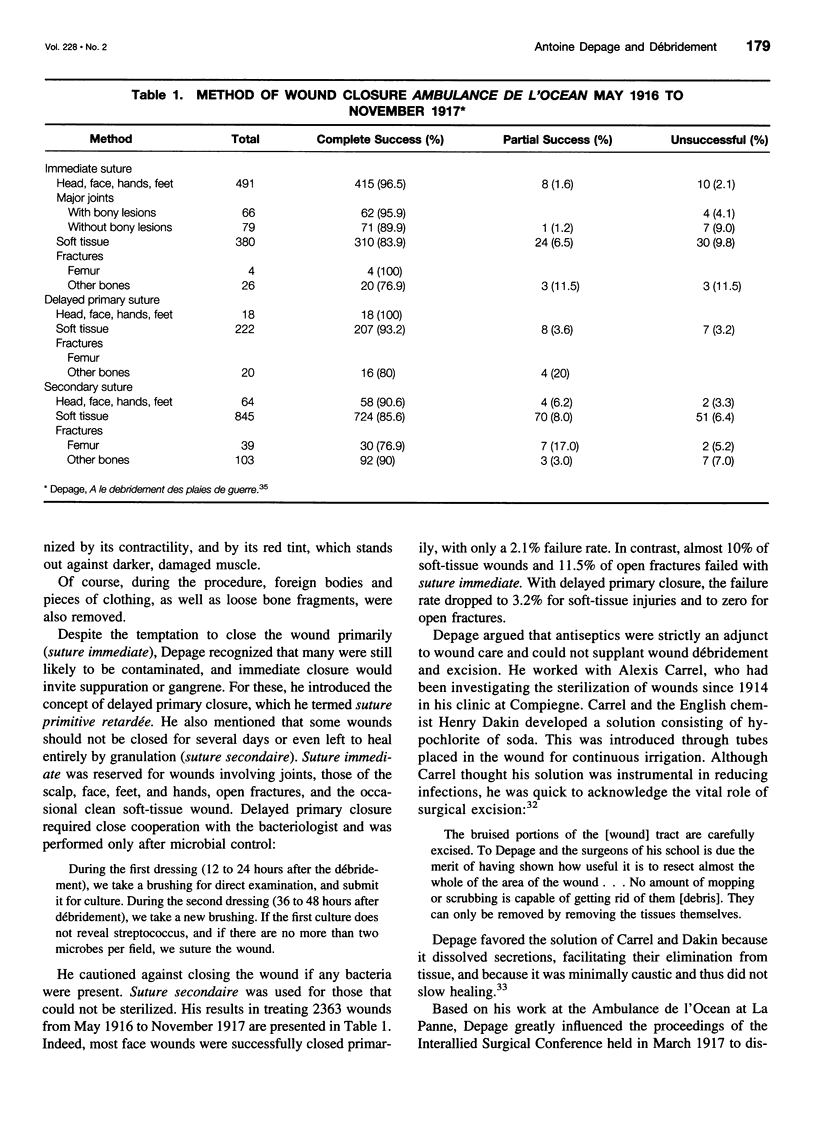
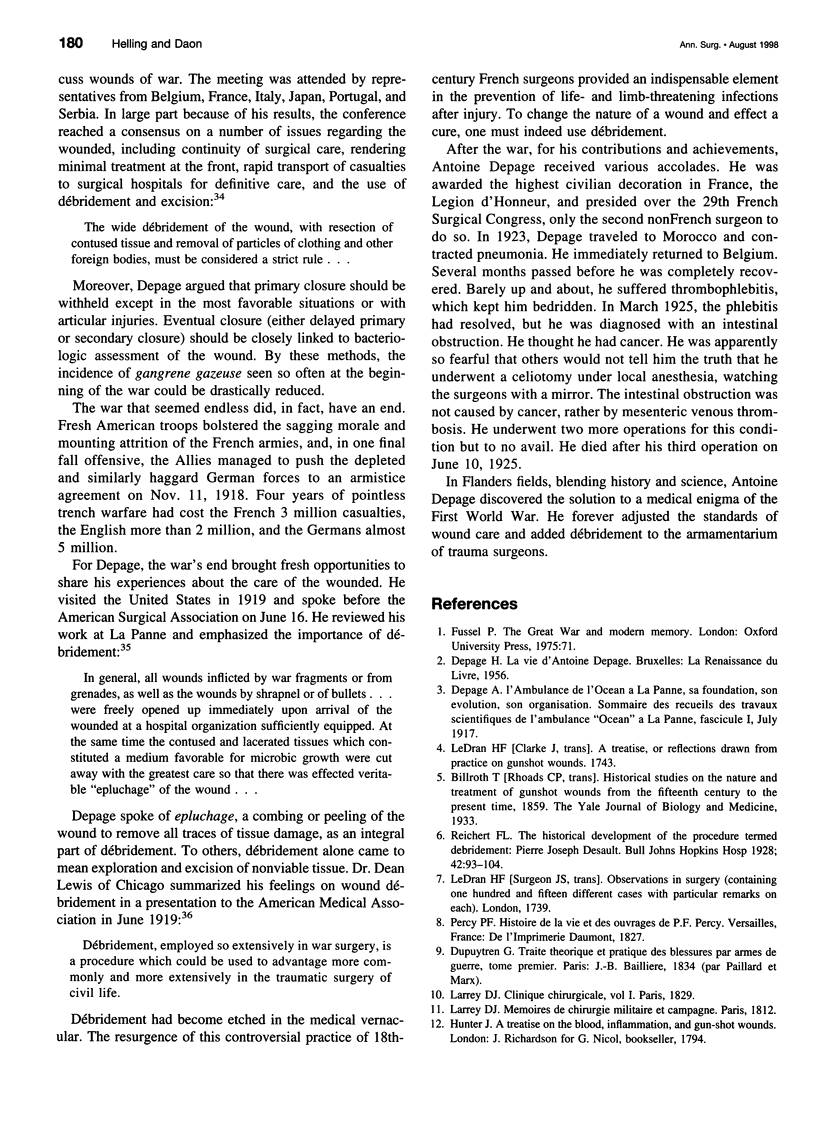
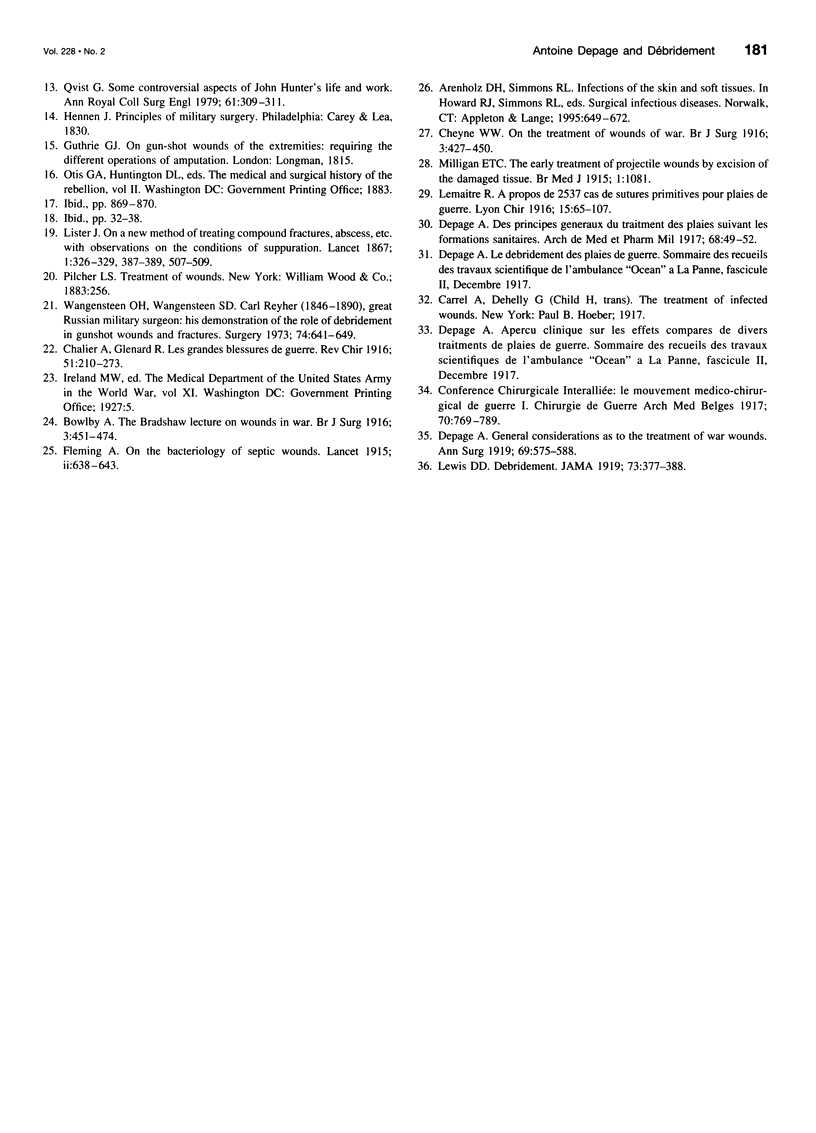
Images in this article
Selected References
These references are in PubMed. This may not be the complete list of references from this article.
- Depage A. GENERAL CONSIDERATIONS AS TO THE TREATMENT OF WAR WOUNDS. Ann Surg. 1919 Jun;69(6):575–588. doi: 10.1097/00000658-191906000-00002. [DOI] [PMC free article] [PubMed] [Google Scholar]
- Wangensteen O. H., Wangensteen S. D. Carl Reyher (1846-1890), great Russian military surgeon: His demonstration of the role of debridement in gunshot wounds and fractures. Surgery. 1973 Nov;74(5):641–649. [PubMed] [Google Scholar]



